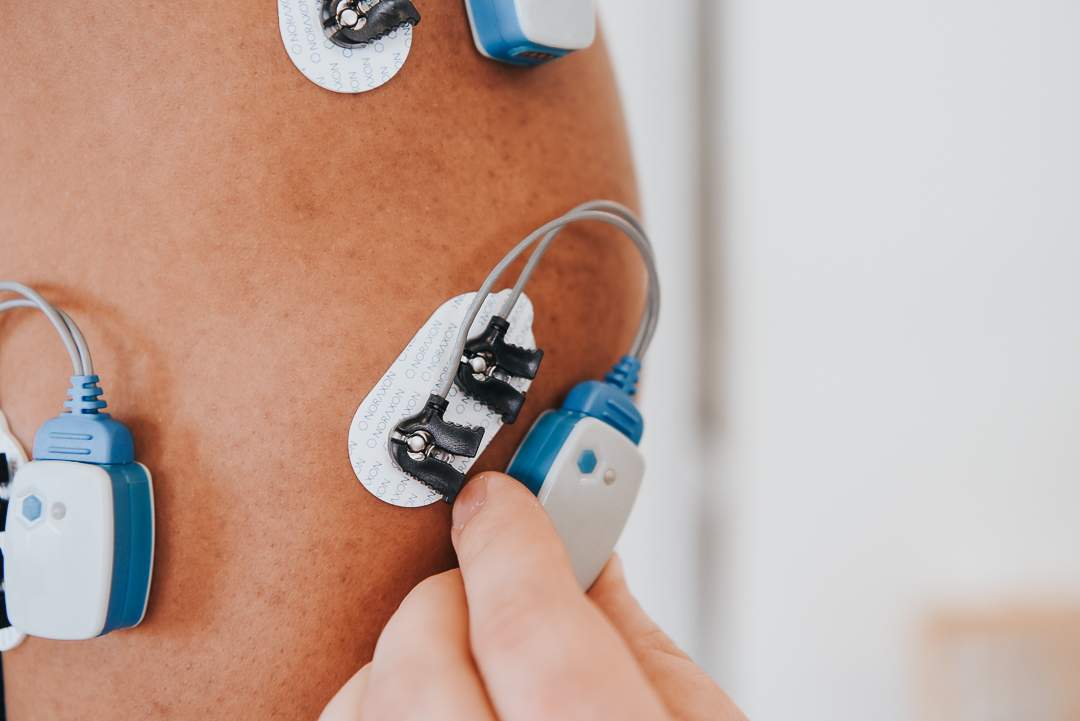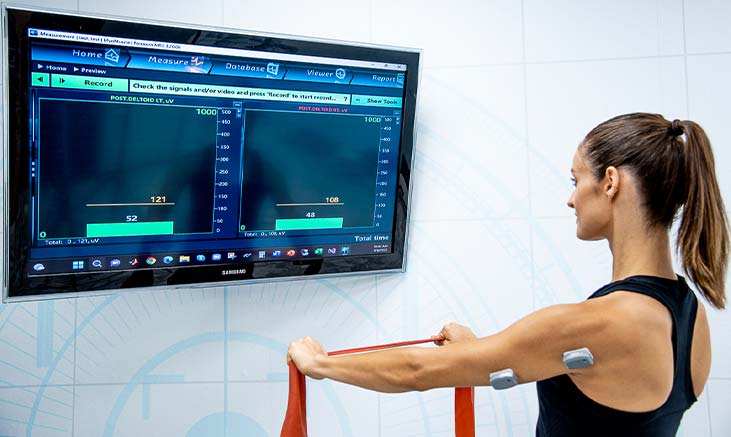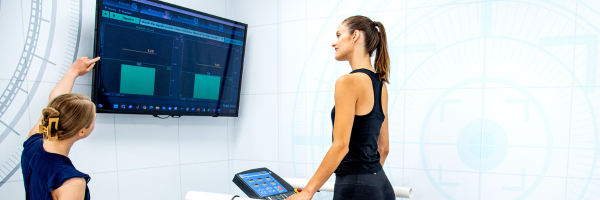What is Electromyography and How is it Used?
Surface electromyography (EMG), otherwise known as kinesiological EMG, is a technique used for measuring and evaluating the electrical signals emanating from skeletal muscles. It works by sensing the myoelectric signal produced from small electrical currents generated by motor unit action potentials, or the exchange of ions across the muscle membranes, with the help of electrodes positioned over the muscle(s) of interest.

The overall change in membrane voltage, which is represented by the continuous summation of motor unit action potentials, can be used to answer questions concerning muscle activation patterns and coordination.
The five key questions answered by kinesiological EMG are:
- Is the muscle active?
- Is the muscle more/less active?
- When is the muscle on/off?
- How active is the muscle?
- Does the muscle fatigue?
These questions are very important in clinical use as they can assist in determining the proper course of action for a patient.
Additionally, since EMG is typically generalized to represent how the body is choosing to use a muscle for a given task, real-time EMG can be used for biofeedback applications to help detect neuromuscular abnormalities, better understand muscle tension in real-time, and teach subjects whether they are properly using their muscles.

Surface EMG and Therapy
In a clinical setting, a doctor or a therapist may want to gain more insight into the problem their patient is experiencing, such as a persistent headache. In this example, the clinician may hypothesize that the patient’s trapezius muscle is constantly active during an initial consultation. To test this theory, EMG testing can be applied by placing the electrodes directly onto the trapezius muscles to visually see the muscle activation while also proving or disproving the clinician’s hypothesis.

Before conducting an EMG test on a patient, a clinician will ask the patient about the problems they are experiencing. These questions can range from how the problems started, how they feel, and how it affects their everyday lives or functionality in movements. After the initial questioning, there will typically be a brief examination of physical strength and reflexes which helps determine what kind of tests to apply.
When biofeedback is provided during therapy, it may allow users to gain better control over muscles and physical processes that were otherwise considered an automatic response of their nervous systems. This provides the opportunity to improve rehabilitation for patients and can possibly reduce the need for prolonged treatment.

